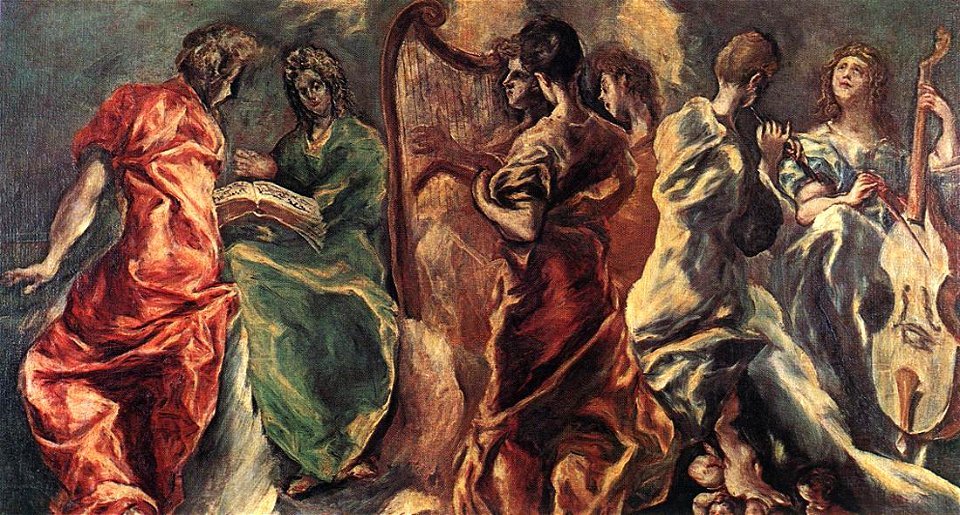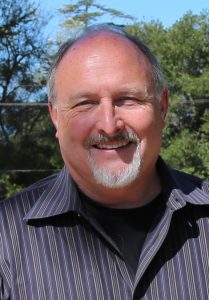
I’m ignostic.
My favorite new word of the past year, ignostic is not at all the same as agnostic. Agnostic from the original Greek means without gnosis—without knowledge—but in social use it really means not only am I without knowledge but I’m also actually without interest. I don’t care much for the topic and give no thought to it. Ignostic, however, is very different. Having the same etymology as ignorance, ignostic means not only lack of necessary knowledge, but it also emotionally means I really do care about the conversation, and we need to build some proposition about the subject so we can discuss it.
Coined in 1964 by Rabbi Sherwin Wine, a founding figure of humanistic Judaism, ignosticism claims God talk is pointless until the word God is filled in some. You can’t just say God this and God that. You first must frame with some specificity what that word concept is meant to encircle. Ignostic means I’m without knowledge on the subject, but I’m very interested in it, and let’s pursue some definition of the intended subject.
And to this Swedenborg says, “Precisely.”
Swedenborg’s Characterization of God
Swedenborg fills out what the word God means in numerous ways, but a core concept is that God is actively present everywhere and in everything. In our Swedenborg reading we can get a crucial dimension upon which I want to elaborate: that we abide constantly in a very crowded spiritual atmosphere whether or not we are consciously aware of it.
Swedenborg wrote more about angels during the eighteenth century than any other writer on the planet, and his by far bestselling book, Heaven and Hell, played the leading role in the nineteenth century revolutionizing perceptions about the presence of the spiritual world with us. Religion historians Leigh Eric Schmidt of Harvard University and Catherine Albanese at the Univ. of California, Santa Barbara, are two important contemporary scholars who tag Swedenborg as the leading force in the nineteenth century transforming how Americans believed in the immediate presence of the spiritual world. Sherlock Holmes creator and author Arthur Conan Doyle pursued a passionate interest in the presence of the spiritual world, writing a virtual encyclopedia on the nearness of the spiritual world and how to be touched by those now gone on. He pinpoints Swedenborg as the most important pioneer advancing new constructs for understanding the active presence of the spiritual world, writing, “The great Swedish seer Emanuel Swedenborg has some claim to be the father of our new knowledge of supernal matters. When the first rays of the rising sun of spiritual knowledge fell upon the earth, they illuminated the greatest and highest human mind: that mountain peak of mentality was this great religious reformer.” (1)
The Swedenborgian view of a spiritual world intimately surrounding and intersecting our waking and sleeping selves forms an interconnected matrix of living spirits that actively and continuously envelops within the web of God presence. As such, we are lovingly enmeshed in a complex spiritual care system of Divine presence through a community of angels. Such an interactive spiritual system makes possible an intentional spiritual practice that actively facilitates guidance and help. Spiritual support from departed celebrated saints long has played a role in the prayer life within Christianity, but Swedenborg radically transforms the nature and role of angels in our spiritual lives. Far exceeding spiritual elites elected by earthly church leaders into formal sainthood, the new picture of assisting souls from heaven includes all who have gone on into the spiritual world who possess a developing set of skills for a ministry of presence with those on earth.
Ancestor Worship as an Ancient Practice
Ancestor worship seemed odd to me during my early years of studying world spiritualities, but now that I have outlived a great number of important people in my life, I have come to appreciate from the basis of personal experience why this ritualized practice extends so fully around the planet and through history. From my own dream experiences and subtle spiritual sensibilities, this dimension of presence with me has been a significant feature of my inner life not so much in the sense of a great quantity of experience but of the significant quality of spiritual presence at crucial times of those gone on. I began having experiences of connection first through dreams years ago, and over many repetitions in both sleeping and waking experiences I have experienced a non-invasive and gentle presence with the result that I feel closer to my father now than when he passed over in 1995. I shaped some time ago a playful practice I call channeling dad, which I typically use when I’m dealing with a particular kind of challenge that calls him to mind for his specific skills, and I’ve smiled at how unfailingly useful this has been for me.
I realize such a phenomenon can be understood as self-psychology, merely a technique for unlocking my own potentiality and not a happenstance indicating any facts about a larger spiritual reality outside of me. But what I am saying is that I’ve been growing for some years in such a conscious naming of the presence of spiritual help that now includes my mother, my grandparents, aunts and uncles, and many Swedenborgians whom have left this earth. And my experience with this experiential practice that started only in late middle age but keeps growing as a trusted phenomenon has led me into an understanding for the worldwide practice of seeking help and guidance from ancestors.
And this is the same subject as Swedenborg’s discussion of the nearness of the spiritual world—potentially a quite crowded presence that is here right now with us connected with all of our living journeys. In any event, Swedenborg affirms that each one of us is attended by living spirits as we heard in our reading from Secrets of Heaven (904). But there’s more than just a metaphysic here. There is also the basis and structure for intentional spiritual practice to maximize the benefits of living in this crowded presence of God. When we open ourselves to and invite those with a much higher consciousness to be with us, we are potentially uplifted higher into Divine light and love. In fact, according to Swedenborg it is impossible for us to do anything good and to turn toward the Divine except through the ministry of angels (Secrets of Heaven §233). Regular intentional connection toward angelic presence stimulates further motivation to be aligned and fused with Divine will, which in turn empowers our will to choose regenerate living, transformational living (Secrets of Heaven §99).
Jacob’s Ladder Inside Our Consciousness
In the famed ladder biblical dream, Jacob beholds angels ascending and descending, coming and going, which Swedenborg affirms is a pictorial graph of God’s communication system with us. Whether we ever realize it with any clarity, we are not alone. But the ladder activity goes even more inwardly to the metaphysics of love, so to speak. The going up and down on the ladder also speaks to what’s going on inside our attempts to live well and right. The way even our smallest good actions undertaken with the right intention descend down to their derivative goodness of intention and the way that derivative goodness also simultaneously ascends up and up and up into the highest source of love, Jacob’s ladder action pictures the dynamism of love and goodness. Jacob’s ladder pictures the continuum of the source, force, and pathways of divine love.
Swedenborg says that when angels communicate with us it is not through normal human language but rather through the subconscious elements of our minds and souls. This is where our thoughts originate and form into the language of our waking selves. They act as nudging agents that always help us to sense the better way, to feel hope, to figure our spiritual wisdom. The presence of angels communicates values: in the descending and ascending actions we learn the connective pathways between our living decisions and the depth of our purpose in God.
Unified Spiritual Field Theory as the Ignostic Answer
As such, we can also think of Jacob’s ladder as a picture of a unified spiritual field theory. In Swedenborgian spirituality, interconnected energy systems of the Divine course through a matrix he calls series and degrees. In such a unified spiritual field every thought and feeling teems with kinetic life and interconnects with all communities of life that their source in and thus flow from the Divine (Heaven and Hell 168). And so it is that we can be conduits of positive (and negative) force for one another in this world and crucially also with those now in in the spiritual world who participate with us in the unified spiritual field.
This unified spiritual field theory is how Swedenborg details what it meant by the word God. This is the crucial definitional piece for the ignostic quester if one seeks definition from Swedenborg. And it is a crucial meaning filler because in this filled in spiritual space we learn something crucial about our everyday consciousness and how a God concept can work. What is meant by the concept of God? We’re talking about a phenomenon of crowding. Much of what is indefinable and unknowable is nevertheless extended toward, around, and through us in such as way as to be knowable.
For what Swedenborg helps us to discern is that the more we can feel Divine impulses, which angels facilitate, the better we can discern and choose how we want to be and live. And with that conscious spiritual practice arises. Attention is a door hatch that can better facilitate energy channels for our deeper consciousness to dynamic spiritual energy of encouragement, insight, and love itself both while awake and while we slumber. Simply by telling God we seek to be open to the ministry of angels opens a hatch. It focuses on and alerts something within levels of our inner minds. A flow is facilitated that seeks to maximize the degree to which we choose to be a part of living love. Communing intentionally with God’s crowd, if you will, is a form of prayer. It is also just a way of living, just a way of coming and going on the ladder that connects our deepest inmost to the utmost of the divine.
In this great chain of being we can know, and we can trust that we are loved not only by God and not only possibly by some in this world, but also by a host of advanced souls in the spiritual world who desire and encourage our spiritual formation. And Swedenborg assures us that the power of angels is immense (Heaven and Hell §229). And that’s something we can use every single day.
(1) Doyle, Arthur Conan. The History of Spiritualism Volume 1. United States: Book Tree, 2007.

Rev. Dr. James F. Lawrence has been an ordained minister in the Swedenborgian Church of North America for several decades, and has served in a variety of settings and ministries. He currently serves as president of the denomination, after many years as dean of the Center for Swedenborgian Studies at the Graduate Theological Union in Berkeley, CA. Jim lives in Oakland with his wife and dog.

If you’re interested in reading Heaven and Hell, check out the link below: